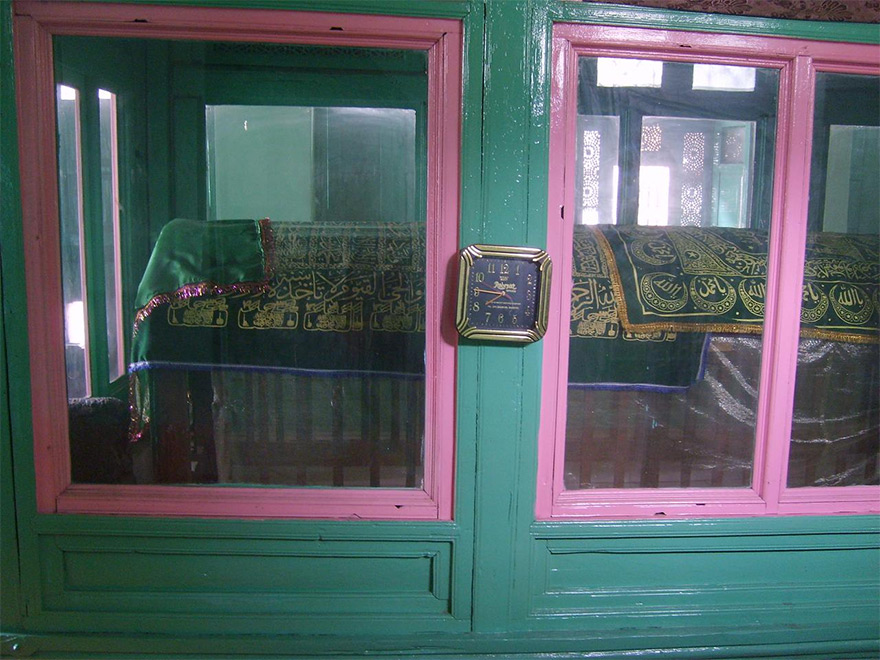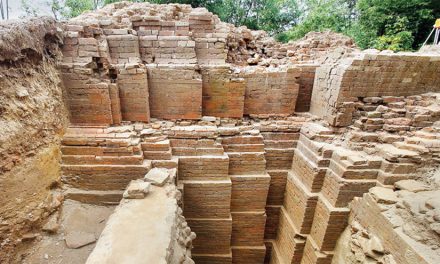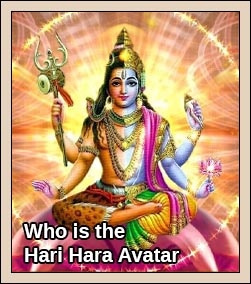
It is a commonly-held belief among Christians and Muslims that Jesus rose to heaven, and that his body was never buried. However, recent media coverage has brought the attention of the world to the Rozabal Tomb in Kashmir, said to contain the body of one Yuz Asaf, a name supposedly adopted by Jesus when he was in India. This has reignited widespread debate on this topic. Local tradition states that the entombed was a prophet of Ahl-al-Kitab, or People of the Book (traditionally Christians and Jews), and his name was ‘Isa – the Qur’anic name for Jesus.
The proposed burial-place of Jesus in Srinagar, Kashmir, is known to the locals as Rozabal, meaning the ‘Honoured Tomb’. It is known as the tomb of this very Yuz Asaf. The word ‘Yuz’ stands for Yuzu (meaning Jesus), and ‘Asaf’ in Hebrew means gatherer, namely, one who was to collect the lost sheep of Israel. It is said that the Prophet Yuz Asaf arrived from Syria about two thousand years ago.

The question of the identity of Yuz Asaf, however, is a controversial issue. Is Yuz Asaf a name adopted by Jesus Christ when in India? Could this be the tomb of Jesus Christ, or is Yuz Asaf as the current caretakers of the tomb have begun to insist, a Muslim saint with no connection to Jesus?
Easter News Coverage
In Easter 2010, several international news organisations and mainstream newspapers around the world ran stories on the Rozabal Tomb in Srinagar, Kashmir. The articles all stated a large increase in the number of visitors to the tomb in Kashmir in recent times. The news organisations, which included the BBC1, The Times in Britain2 and The Times of India3, suggested that there were two main reasons for the increased interest. One is that the latest version of the Lonely Planet travel guide for Kashmir mentions the rumour of the Rozabal Tomb as ‘the Jesus tomb’, inspiring many curious travellers to visit. Secondly, a popular thriller, The Rozabal Line, the plot of which centres on the idea that Rozabal is the tomb of Jesus, has enjoyed success in recent months, especially within India.
So, the question naturally arises: why has the Lonely Planet guide called this tomb the ‘Jesus tomb’?
Report on the Rozabal in 1899 by Maulawi Abdullah
While it may be new to many in the world, this tomb is well-known to Ahmadi Muslims. In his treatise written in 1899, Masih Hindustein Mein (Jesus in India), Hadhrat Mirza Ghulam Ahmad, the Promised Messiah and Founder of the Ahmadiyya Muslim community, detailed this very tomb:
‘….I shall try to prove in this book that Jesus did not die on the Cross: he did not go up to heaven, nor should it be supposed that he will ever again come down from heaven to earth; that, rather, he died at the age of 120 years at Srinagar, in Kashmir, and that his tomb is to be found in the Khan Yar Street of that town. I have divided this enquiry into ten chapters, and an epilogue, comprising the testimony of the Bible, the testimonies of the Holy Quran and the Ahadith, the testimony of medical books, the testimony of historical records, the testimony of oral traditions handed down from generation to generation, miscellaneous circumstantial evidence, the testimony of rational argument and the testimony of fresh revelation from God to me.’
(Jesus in India, Introduction)
‘In any case it was necessary for Jesus to find out the whereabouts of these lost sheep, who had, on coming to this country, India, become merged into the other people. I shall presently adduce evidence that Jesus did in fact come to India and then, by stages, travelled to Kashmir, and discovered the lost sheep of Israel among the people who professed the Buddhist faith and that these people ultimately accepted him, just as the people of the prophet Jonah accepted Jonah. And this was inevitable, for Jesus had said in so many words that he had been sent to the lost sheep of Israel.’
(Jesus in India, Chapter One)
‘I shall prove in due course that Jesus’s tomb which has been recently discovered in Srinagar in Kashmir is of the same type as the one in which Jesus was placed in a state of swoon.’ (Jesus in India, Chapter One)
‘…hundreds of thousands of people have, with their physical eyes, seen that the tomb of Jesus exists in Srinagar, in Kashmir. Just as he was crucified at Golgotha, i.e., at the place of sri, so has his tomb been found at the place of sri i.e., Srinagar. The word sri occurring in the names of both places is very striking indeed. The place where Jesus was crucified was called Gilgit or sri, and the place where in the latter part of the nineteenth century the tomb of Jesus has been discovered is also called Gilgit, or sri. It appears that the place called Gilgit, in Kashmir, suggests the word sri. This town was probably founded in the time of Jesus, and as a local memorial to the event of the Cross it was named Gilgit, i.e., sri; like Lhasa, which means the ‘City of one worthy of worship’; this word is of Hebrew origin, and suggests the city was founded in the time of Jesus.’
(Jesus in India, Chapter Two)
The first recorded report we have about the details of this tomb and it being linked to the historical Jesus, is a letter from Maulawi Abdullah. After conducting his own investigation, Maulawi Abdullah sent a detailed report to the Promised Messiah from Srinagar regarding the tomb5.
He included several details about the tomb and the inhabitant of it. In the letter he stated:
‘From the evidence of reliable persons it has been proved that this tomb has been in existence for about 1900 years, and the Muslims hold it in great reverence and respect and frequent it.’
Further adding:
‘The general view is that a venerable messenger is buried in this tomb, who came to Kashmir from another country to preach to the people. They say that he lived some 600 years before our Holy Prophet Muhammad(saw).’
Current Kashmiri Views on Rozabal
Modern day opinions of the locals in Srinagar, however, present a very different view of the tomb. Any suggestion that the tomb contains the mortal remains of Jesus Christ is met with fierce hostility and mockery. There has been a hardening of attitudes towards any attempts of research at the tomb. Over the past four decades researchers such as Dr Fida Hassnain, a prominent Sufi archaeologist and Professor of History, have provoked an increasing level of opposition from the caretakers. Dr Hassnain suffered personal threats against him and his family in connection with his research at the tomb. American researcher and former journalist, Suzanne Olsson, also had her attempts at detailed examination of the tomb thwarted by one of the caretakers of the tomb. The local Muslims are also opposed to research along these lines, and strongly believe that Jesus Christ could not have a physical tomb on earth, having been lifted to the Heavens.
In the 2008 documentary, Jesus in India directed by Paul Davids, we see what happens when someone arrives at the Rozabal Tomb and attempts to film it. In the documentary we are shown a crowd that forms quickly and the aggressive nature of the locals demanding that filming be stopped.
This dismissive and condescending approach is also reported in the BBC News article from April of this year. A local is reported to have said:
“It’s a story spread by local shopkeepers, just because some crazy professor said it was Jesus’s tomb. They thought it would be good for business. Tourists would come, after all these years of violence.
“And then it got into the Lonely Planet, and too many people started coming.
And one foreigner…”
(he then gave me an apologetic look), “broke off a bit from the tomb to take home with him. So that’s why it’s closed now.”
Yet the ‘crazy’ professor referred to here is Dr Fida Hassnain, a well-qualified archaeologist and scholar of religion who held the position of Director of State Archives for Jammu and Kashmir, from 1954 until his retirement in 1983. Dr Hassnain’s degrees include a Master of Divinity, Doctorate of Indology and Doctorate of Sufism. He has also the distinction of a lifetime achievement award from the Jammu and Kashmir Government. He is not only of the opinion that Jesus is buried in this tomb, but has written several detailed books on the subject, from as early as 1988 to the present day. Given his qualifications, rather than being an arbitrary ‘crazy professor,’ Dr Hassnain is in a very good position to form a reasoned and informed opinion on the tomb.
The Caretakers of the Tomb
A person that has appeared in several documentaries about the Kashmir tomb is Mohammad Amin Ringshawl. In each of his appearances he confirms that the tomb contains ‘Yuz Asaf’, but speculates that there is no connection between Yuz Asaf and Jesus Christ.
In the Asian Times article, he plainly states:
‘Yuz Asaf and Syed Naseerudin are buried here and both are Muslims.’
In a 2007 Christmas special documentary shown in the UK on Channel 4, entitled The Hidden Story of Jesus, he is interviewed immediately after an interview with Dr Fida Hassnian, and states the following:
‘This is the grave of a Muslim messenger, but Jesus is not buried here because it is written in our holy book the Qur’an, that Jesus has been taken up to heaven, to Allah. Yet Qadianis, Mirzais [derogatory references to members of the Ahmadiyya Muslim community], who are answering by saying this is the grave of Jesus, are giving incorrect information by saying he is here. No Muslim in the entire world would say that Jesus is buried here.’
This statement shows a clear opposition to members of the Ahmadiyya Muslim community, referred to here using the derogatory terms Qadianis and Mirzais. Ringshawl is implying that it is only Ahmadi Muslims who are supporters of this theory and that they are misinforming the masses.
The opposition of Ahmadiyyat that has existed ever since the community was founded in 1889, has led to a change in attitude of the locals towards the Rozabal. In 1899, we read of hundreds of locals testifying to the tomb belonging to Jesus Christ, and yet today we read that the current caretaker of the tomb himself completely dismisses the idea lest the Ahmadiyya and historic versions are upheld.
What evidence is there that Yuz Asaf is Jesus?
Given these accounts from the locals and the caretakers of the tomb, what argument can be made for the tomb being that of Jesus Christ? Are Jesus and Yuz Asaf one and the same person?
Carved Footprints
The carved footprints are one of the distinctive features of the tomb and one of the main clues in helping us identify the person buried there. They are mentioned in the latest edition of the Lonely Planet guide and interestingly, they were also mentioned in the letter of Maulawi Abdullah(ra).
‘Near the grave of this prophet of Allah in the right-hand corner there is a stone, which has upon it the footprints of a man. It is said that it is the footsteps of the messenger. Probably this footprint of this prince-prophet remains as a sign.’

Many researchers have pointed to the feet carvings and highlighted how they appear to show crucifixion scars on both feet. The location of the scars towards the front of the feet and at different places on each foot, is also significant. The BBC 4 documentary, “Did Jesus Die?”, highlights these carved footprints and states:
“The position of the scars, just behind the toes, do not match each other, but they would align if a single nail was driven through both feet, with the left foot placed on top of the right.”
This is a key piece of evidence about the tomb and has featured prominently in books and documentaries covering the subject.
Dr Fida Hassnain talks about his personal discovery of these carved footprints and the effect it had on him in a documentary shown on the Discovery Channel:
“I asked one of my assistants just clear [sic].., it was quite dark, but anyhow he cleared it and he said ‘Oh, I feel some sort of sculpted stone is here’. We just cleaned the surface and there I felt feet impressions, and looking at them it appeared they had wound marks.”10
Feet carvings themselves are quite common, but Dr Hassnain states that he has never seen feet carvings with these distinctive marks upon them.
“I felt astonished to see these wound marks, and at once it took me to the Crucifixion scene where Jesus was put on the cross.”
Were these scars on the feet illustrating something distinctive about the inhabitant of the tomb? This fascinating clue has been alluded to by every researcher studying the tomb. What was the person who made this sculpture trying to highlight, and why did he or she consider it so important?
Direction of the Grave
The next piece of evidence is the direction of the tomb itself. Researchers including Dr Fida Hassnain, have stated that the direction of the actual grave of Yuz Asaf is in an East-West facing direction. This is significant as this is the direction in which the Jews buried their dead, not in the direction traditional for Muslims with the right shoulder facing towards the Qiblah (in Makkah).

There is another source that corroborates the east-west direction for Yuz Asaf’s tomb. Shaikh Al-Said-us-Sadiq was an oriental writer and historian who lived in the 3rd and 4th century of Hijra, and died in 381 AH (962 CE). He wrote over 300 books, the most famous of which was Ikmal-ud-Din. The text was first printed in Iran in 1782 C.E. In this text the account of the passing away of Yuz Asaf includes the following passage:
‘He then directed Ba’bad to prepare a tomb over him (at the very place where he died). He then stretched his legs towards the West and his head towards to the East and died. May God bless him.’11
If Yuz Asaf is a Muslim saint as some argue, then why is his tomb in a Jewish-style east-west grave?
Traveller Prophet from A Foreign Land
The local traditions and Kashmiri histories do talk about Yuz Asaf as being a holy man who travelled from another country. This again supports the thesis that this person is Jesus, especially as Jesus is recorded as a great traveller in Islamic traditions12.
Interestingly, this tradition of Yuz Asaf coming from a foreign land has endured the changing views of the locals. During one of the interviews from Paul Davids’ film, one of the locals states proudly:
Muslim Bystander 1: This (tomb) is very, very ancient – we cannot say for sure how old. Our ancestors said that throughout the entire world, this grave is unique! This is a Messenger of God! He came here from Egypt and liked the climate. He meditated here and settled here. He liked the love and hospitality of the local Muslims here. He didn’t return to where He came from, because He was respected here. He died here and is buried here. Those are the facts, and that’s it.
The comment that Yuz Asaf stayed in Kashmir due to the hospitality of the local Muslims makes little sense, given that local traditions suggest the tomb is around 2000 years old, and pre-dates Islam by many hundreds of years.
However, the rest of the opinions in this quote provide a fascinating insight into some of the facts about the tomb, that appears to have been preserved from earlier times. The above account not only reiterates that Yuz Asaf came from a foreign land, but specifically mentions Egypt. The local is clear that the inhabitant of the tomb is in no way linked with Jesus Christ, and yet he states clearly that Yuz Asaf spent time in Egypt. The land of Egypt is a country where Jesus is explicitly recorded in the New Testament, as having spent time13. The prophethood of Yuz Asaf is attested to here also; again matching what is known and accepted about Jesus.

Inscription at Temple of Solomon
The most definitive reference to Yuz Asaf and Jesus Christ being the same person comes in the form of two written inscriptions from a local temple called the Temple of Solomon. The first two lines of the inscription remain today but the last two have been tampered with, rendering them illegible. The four inscriptions were recorded in Tarikh-i-Kashmir by Khwaja Hassan Malik, written in 1420AD. The inscriptions state:
The mason of this pillar is the suppliant Bahishti Zargar, year fifty and four.
Khawaja Rukan, son of Murjan, erected this pillar.
At this time, Yuz Asaf proclaimed his prophethood, year fifty and four.
He is Jesus, Prophet of the Children of Israel.
These inscriptions seem very clear and comprehensive, but there are some questions that remain. How old are the inscriptions? Why were they removed and by whom? Is the year ‘54’ mentioned here representative of 54 AD or 54 A.H, which would be 673 C.E.?
Concerning the year 54, mentioned in the inscriptions cited below, Prof. Fida Hassnain is of the opinion that the dating system used here is the Laukika Era, a system used specifically in Kashmir, which is recorded to have started in 3076BC.
‘During that period, the Laukika Era was exclusively used in Kashmir. As this era started in 3076 BC, the 54th year mentioned in the inscription would come to either 22 BC or 78 AD (since Laukika Year 1 is 3076 BC, 3054 would be 22 BC, and 3154 would be 78 AD.) As it was not possible for Jesus Christ to have travelled to Kashmir in 22 BC, I take the year 78 AD to be the correct date of his arrival.’14
Proponents of the theory argue in favour of these inscriptions, while critics demand more evidence.
Scholars and Researchers
This level of evidence in support of the theory has attracted writers and scholars from a variety of backgrounds. While critics of the theory such as the locals in Kashmir, will argue this is a topic only Ahmadis write about, there is a growing number of scholars writing on this subject, who have no connection to the Ahmadiyya Muslim community. The actual number of scholars who support this theory is still small in number, yet remarkably varied in background. It appears researchers from different parts of the world, coming from different religious backgrounds, have been led ultimately to this tomb as a final resting place for Jesus Christ.
American researcher and committed Christian Suzanne Olsson, is one person who has studied and written about the tomb for many years. She led efforts to obtain DNA samples from the tomb and carried out further research there. She has no doubt Jesus Christ is buried in that tomb15.
German scholar Holger Kersten now a Buddhist, is another person who has written in detail about Jesus travelling to India, and the tomb at Rozabal16. Kersten’s book, Jesus Lived in India, was published in 1994 and featured research supporting the view that Jesus Christ survived the Crucifixion, and journeyed to Kashmir. He also concludes that Rozabal is the tomb of Jesus and that Yuz Asaf and Jesus is the same person.
Recently, as featured in The Review of Religions, Indian born researcher Mantoshe Devji a Sikh lady, has given a detailed analysis of the tomb and her findings during a visit there17.
These are just three examples of researchers coming from very different countries and faith traditions, yet arriving at the same opinion about the Rozabal Tomb in Kashmir. It should also be noted that none of these three are Ahmadi Muslims, which provides a strong counter argument to those claiming that this theory about the tomb is merely an Ahmadi concoction.
Conclusion
One disturbing fact visible at the tomb is a series of changes and alterations. The tomb is undergoing change and signs are being added to the front of the building. There are reports of relics and items related to the tomb being sold off or held in people’s homes and the tomb suffering from serious decline at the hands of the current caretakers.
Paul Davids’ documentary Jesus in India, suggests that the carved footprints placed next to the tomb that help link it to Jesus and the Crucifixion, have been covered over and are no longer visible.
There are concerns that the tomb and the identity of its inhabitant will be obscured as much as possible by the current caretakers. Thankfully, there are a large number of photographs and other documentary evidence about the Tomb to prevent this from happening. However, this state of affairs is still worrying.
What lies ahead for the tomb is hard to predict. There is the clear assertion of the locals and the caretakers that the tomb is not related to Jesus, and that it must be locked up. Any publicity around the tomb is unwelcome. However, publications and documentaries are being produced about the tomb, linking it to Jesus Christ. This is garnering interest around the world and more people are becoming aware if its existence every day. It appears that the tomb is being pulled in very different directions by two equally determined groups of people.
To compound the problem, the geographical location of the tomb is an area plagued by terrorism, hampering efforts for further research. Will the truth ever be known and accepted about this tomb? Any future efforts to prove who lies in the tomb will have to be made with sensitivity and will require much diplomacy.















Believe not this story,it is a lie.
Mirza Ghulam Ahmad also claimed to be God. I think some of these researchers should first investigate that claim.
Some saints have discovered in meditation that JESUS christ,Buda kaushika rishi(who wrote ram raksha stotram),SWami Vivekanada were the avtar of KAUSHIKA RISHI or BRAHMARSHI VISHWAMITRA
I agree with Mr.karthik
Nothing but nonsense……100% fake.